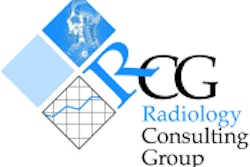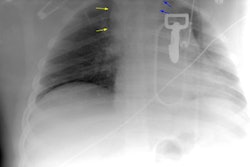Radiology Sourcebook: A Practical Guide for Reference and Training by Douglas P. Beall
Humana Press, New Jersey, 2002, $69.50
This first-edition, 208-page hardcover manual consolidates information on various topics that are relevant to radiology trainees, but too often omitted from traditional radiology texts.
The book was originally conceived when its author was a resident at Johns Hopkins University Medical Center in Baltimore. Its predecessor, A Practical Guide to Residency in Diagnostic Radiology was published online at AuntMinnie.com for a year. It was very well received by residents throughout the country, and its success ultimately led to the publication of this book.
The first two chapters cover general clinical information and contrast agents, such barium and genitourinary exam protocols, pre-examination preparation including informed consent, sedation/medications. There is an emphasis on the application of contrast agents to specific procedures. The information is reasonably comprehensive, but is limited to the most important points to keep it readable and easy to use.
The next three chapters cover common interventional, angiographic, and musculoskeletal procedures. These sections do not to replace standard interventional references, but they do provide detailed instruction and logic for standard techniques that every radiologist should be able to perform. Dr. Beall effectively describes the details of many techniques that, in the past, could only be learned by actually rotating on the interventional service.
There are no radiographic images, but there are numerous illustrations of interventional/angiographic equipment and techniques, vascular anatomy, and musculoskeletal anatomy relating to arthrograms.
The remainder of the book covers topics that have a daily impact on residents and fellows such as film reporting, sample dictations, and residency/fellowship requirements and policies. There are also sections that give advice for resident employment, contract information, and searching for a job.
The book successfully fills a void that has long been overlooked in radiology texts. Radiology trainees will find the information to be extremely useful not only throughout their residency, but also during fellowship and beyond.
By Dr. Michael G. GunlockAuntMinnie.com contributing writer
September 26, 2002
Dr. Gunlock is the chief of vascular and interventional radiology at Wilford Hall Medical Center, Lackland Air Force Base, TX. He also is an assistant professor in the department of radiology, Health Science Center, University of Texas, San Antonio.
If you would like to purchase this book, click here.
If you are interested in reviewing a book, let us know at [email protected].
The opinions expressed in this review are those of the author, and do not necessarily reflect the views of AuntMinnie.com.
Copyright © 2002 AuntMinnie.com



















